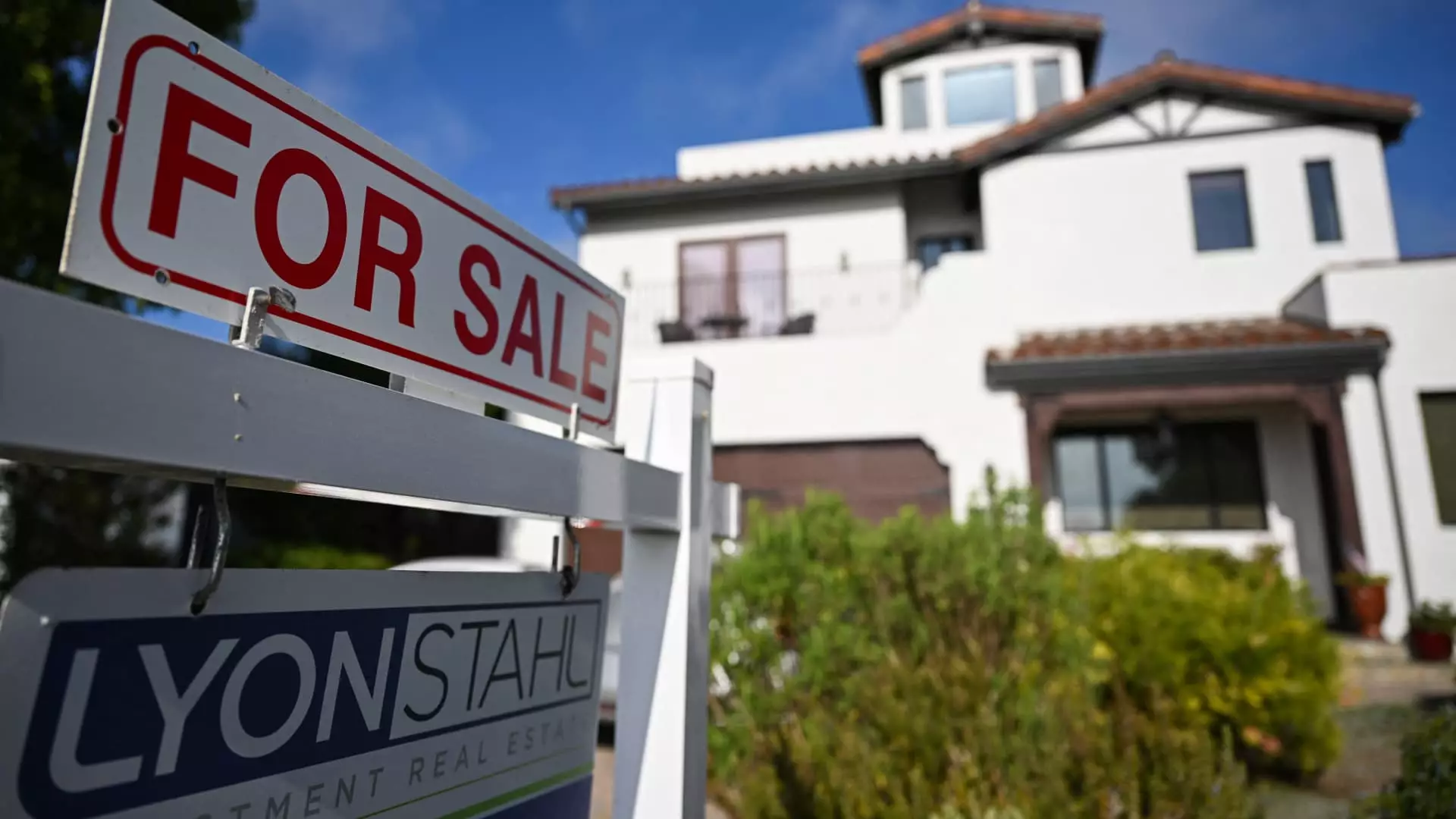Recent fluctuations in mortgage rates serve as a stark reminder of the volatility introduced by political decisions, particularly the Trump administration’s tariff announcements. As mortgage rates plummeted to 6.63%, we see how quickly external factors can sway financial markets and consumer behavior. The sharp drop in interest rates follows a considerable stock market sell-off, leading investors to seek refuge in the more stable bond market. This erratic behavior in response to political shifts suggests that our financial system is still fragile, easily rattled by the machinations of local or global policies.
Investors flocking to the bond market caused bond yields to fall, which generally translates to lower mortgage rates. However, this reaction underscores a broader issue: the persistent uncertainty surrounding international trade and competition. According to Matthew Graham, chief operating officer at Mortgage News Daily, the unknowns of trade policies create an undercurrent of anxiety that weighs heavily on financial decision-making. The implications for potential homebuyers are particularly concerning, as these uncertainties lead to a home buying environment that feels increasingly precarious.
Mortgage Rates vs. Home Affordability: A Disparity Continues
While the current drop in mortgage rates may appear beneficial on the surface, the reality is far more complex. For example, the median mortgage payment for homebuyers hit an astonishing $2,802, marking a record that raises eyebrows and perhaps temperature levels among potential buyers. Coupled with the revelation that about 70% of American households cannot afford a $400,000 home, the situation becomes increasingly bleak.
To contextualize, estimates from the National Association of Home Builders suggest that the median home price will hover around $460,000 in 2025. This projected price, combined with current income thresholds, reveals a worrying trend: more households are moving further away from homeownership. Specifically, around 52.87 million households are projected to have incomes inadequate to afford even a mere $200,000 home by 2025. This disconnect between rising costs and stagnant wages casts a long shadow on America’s housing landscape.
The Growing Supply Dilemma: A Crisis of Affordability
Although there is an uptick in home listings—an increase of 10% year-on-year in March—the majority of these properties do not cater to the first-time homebuyer demographic. Many potential sellers are motivated by a fear of declining home values or the pressure of remote work policies prompting relocation closer to urban centers. These motivations are further muddying the waters of an already complicated market.
Despite the allure of more available homes, there’s a significant gap in supply at the lower price points where most buyers reside. Matt Ferris, a Redfin agent, pointed out that while many people are eager to sell, the ongoing trend of chronic underbuilding since the Great Recession continues to hobble the market. A lack of affordable offerings means that even as supply increases, it is often not aligned with consumer demand, severely limiting opportunities for those on the lower end of the economic spectrum.
Indicators of a Shifting Market
Shifts in the real estate market aren’t merely about availability; they also reflect changing consumer behavior. The latest data suggests that homes are spending longer on the market, and there is a notable increase in price reductions. That trend signals hesitance from buyers, who are faced with high costs and broader economic concerns. The market is realigning, creating a dynamic where buyers have more options but also more uncertainty.
Among the largest metropolitan areas, pending sales dipped by 5.2% compared to last year. The downturn was particularly pronounced in cities like Jacksonville and Miami, with declines of 15.1% and 13.7% respectively. This trend can be partially attributed to the reverse migration pattern post-pandemic, as former transplants reconsider their living arrangements.
Danielle Hale, chief economist for Realtor.com, captures the sentiment aptly: the housing market appears sluggish, with economic anxiety dampening buyer enthusiasm. As the spring season unfolds, the narrative becomes one of cautious optimism rather than exuberant buying—a reality that challenges the traditional notions of a bustling spring housing market.
The Broader Economic Implications
Despite the allure of lower mortgage rates, the fundamental issues surrounding affordability cannot be ignored. The combination of rising sale prices and elevated monthly payments suggests a home buying landscape where dreams are fading for many and where socio-economic divides may deepen. The moving pieces of the economy—tariffs, wages, and housing supply—paint a complex picture of a nation at a crossroads. The decisions made today will resonate for years, influencing not only individual families but also the broader American identity of homeownership in the future.


Leave a Reply